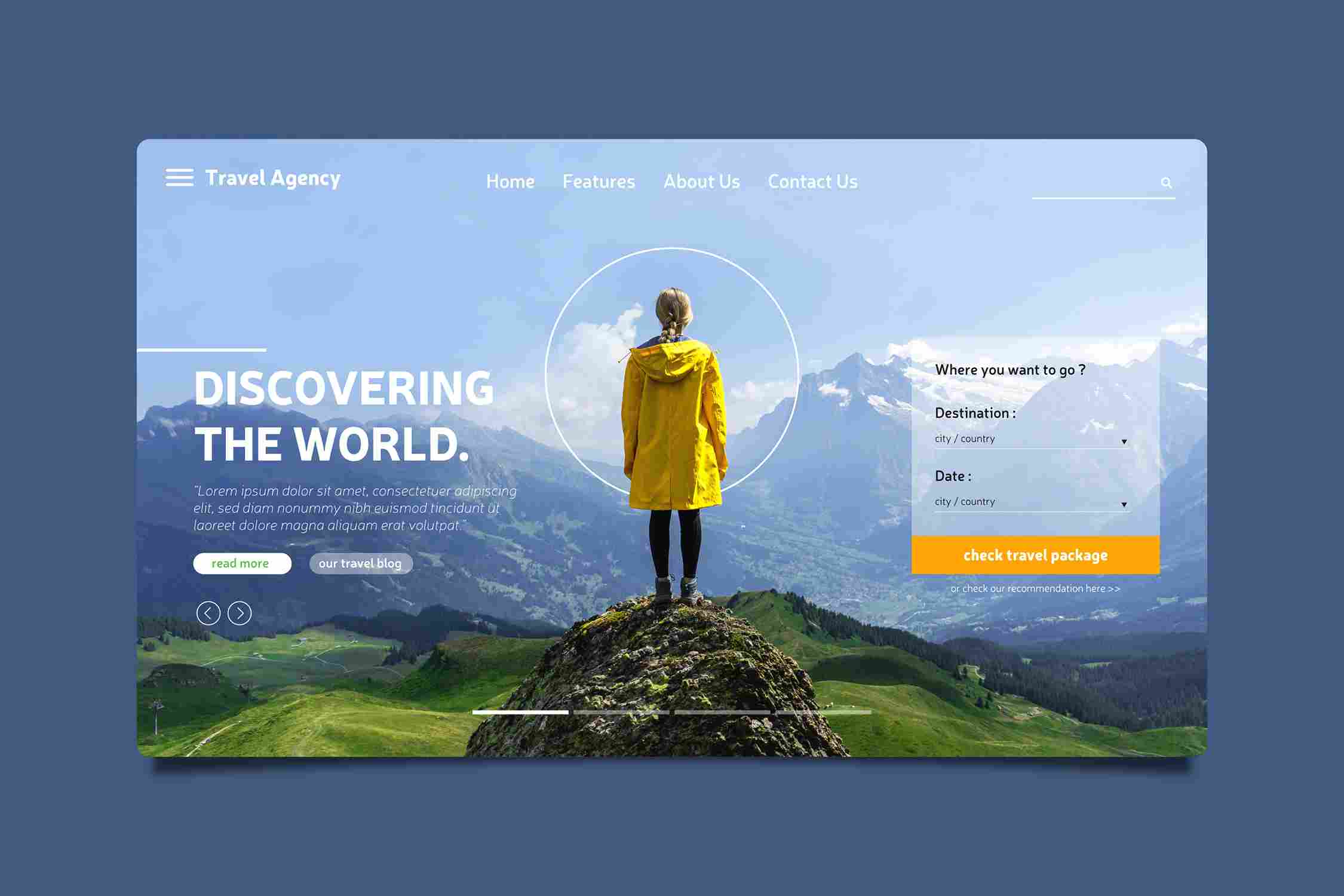The Difference Between Web Application and Website
Confused about web apps and websites? This comprehensive guide explains the crucial distinctions between web applications and websites, helping you navigate the digital landscape with ease.
Introduction
We're living in a digital era, where the internet is an integral part of our daily lives. Whether you're a tech enthusiast or a casual user, you've undoubtedly heard the terms "web application" and "website" being thrown around. But, have you ever stopped to ponder the intricate differences between the two? If not, don't fret! In this article, we'll unravel the enigma surrounding web applications and websites, helping you distinguish one from the other with ease.
So, grab your virtual magnifying glass, because it's time to explore the fascinating universe of web technology!
Decoding the Jargon
Before we delve into the specifics, let's break down the terminology. In today's world, where buzzwords dominate conversations, understanding the language is the first step toward digital literacy. So, let's begin by understanding what exactly a web application and a website are.
Web Application: The Digital Dynamo
A web application, often abbreviated as a "web app," is like the Swiss Army knife of the internet world! It's a dynamic, interactive program that users access through a web browser, allowing them to perform various tasks and functions. Think of it as a software tool accessible online.
Web applications can serve a multitude of purposes, such as:
-
Social Media Platforms: Facebook, Twitter, and Instagram are prime examples. You log in to your account, interact with friends, post pictures, and share your thoughts – all through a web application.
-
Online Shopping: E-commerce giants like Amazon or eBay provide web applications that enable you to browse, select products, and complete transactions.
-
Email Services: Gmail, Yahoo Mail, and Outlook are web apps that manage your emails, letting you send, receive, and organize your messages.
-
Productivity Tools: Google Workspace (formerly G Suite), including Google Docs, Sheets, and Slides, offers web applications for word processing, spreadsheets, and presentations.
-
Project Management: Trello and Asana are web apps used for organizing tasks, collaborating with teams, and tracking projects.
-
Cloud Storage: Dropbox and Google Drive are web applications that store your files and allow easy access from any device.
-
Video Conferencing: Zoom and Microsoft Teams are web apps that facilitate online meetings, webinars, and communication.
-
Gaming: Online games like Fortnite or World of Warcraft are web applications, offering real-time gaming experiences in your browser.
Website: The Static Showcase
On the other hand, a website is a static collection of web pages connected by hyperlinks. Websites are like digital brochures or information hubs. They provide content and information to users, but their interactivity is limited compared to web applications.
Websites are designed for various purposes, including:
-
Informational Websites: These sites provide information about a particular topic, like news websites, educational resources, or personal blogs.
-
E-commerce Websites: Unlike web applications, these sites serve primarily as online stores, displaying products and allowing users to make purchases.
-
Portfolio Websites: Artists, photographers, and professionals often use websites to showcase their work and achievements.
-
Blogs: Personal blogs, like WordPress or Blogger, offer a platform to publish articles, stories, or personal experiences.
-
Corporate Websites: Businesses use websites to present their products, services, and contact information to potential customers.
Now that we've established a baseline understanding of web applications and websites let's venture deeper into the realm of differences!
The Distinctive Features
Interactivity
Web Application: When it comes to interactivity, web applications take center stage! They allow users to perform a wide range of tasks. From filling out forms to playing games or collaborating on documents, web apps offer dynamic user experiences.
Website: Websites, in contrast, are like digital billboards. While they do provide information, the interaction is limited to clicking links to navigate between pages. They are primarily for consuming content.
Purpose
Web Application: The primary purpose of web applications is functionality. They are built to perform specific tasks, such as online shopping, social networking, or project management. The focus here is on user interaction and task completion.
Website: Websites are information-centric. They are designed to convey information, ideas, or products. The emphasis is on content presentation rather than user actions.
Data Storage
Web Application: Web applications often require complex databases to store user information, preferences, and transaction history. These databases enable personalization and advanced features, which is vital for apps like social media platforms.
Website: Websites may have databases, but they are typically simpler and used for storing content like articles, images, or products. The data structures are straightforward compared to the intricate databases of web apps.
User Registration
Web Application: Many web applications require user registration. This allows users to have personalized accounts, which store their preferences, history, and social interactions. Social media and online marketplaces are prime examples.
Website: Most websites do not necessitate user registration. Users can access and consume content without the need to create an account. Blogs, news sites, and informational resources follow this approach.
Complexity
Web Application: Web applications are complex due to their dynamic and interactive nature. They involve multiple layers of technology, including front-end and back-end development, databases, and server communication.
Website: Websites are comparatively simpler in terms of technology. They consist of HTML, CSS, and sometimes JavaScript for interactivity. While they may have databases, the overall structure is less intricate than that of web apps.
Examples
To further illustrate the difference between web applications and websites, let's consider some real-world examples.
Web Application Examples:
-
Facebook: This social media giant is a prime example of a web application. Users can create accounts, post updates, connect with friends, and engage in various activities on the platform.
-
Google Docs: Google's suite of office tools, including Docs, Sheets, and Slides, is a web application that allows users to create and collaborate on documents in real time.
-
Netflix: The popular streaming service is a web app that offers a vast library of movies and TV shows for users to watch on various devices.
-
Airbnb: Airbnb is a web application that connects travelers with hosts who offer accommodations. Users can browse listings, make reservations, and leave reviews.
-
Asana: Asana is a web app designed for project management and team collaboration. It helps users organize tasks, assign responsibilities, and track project progress.
Website Examples:
-
Wikipedia: Wikipedia is a vast online encyclopedia that provides information on a wide range of topics. Users can read articles, but the site's interaction is limited to editing or adding content.
-
Amazon: While Amazon offers web application features, its homepage and product listings primarily function as a website. Users can browse products, read descriptions, and make purchases.
-
National Geographic: National Geographic's website offers articles, photos, and videos related to science, nature, and culture. It's an information hub for its audience.
-
The New York Times: This news website provides articles, opinions, and reports on current events. Users can read, share, and comment on the content.
-
Portfolio Website: A personal portfolio website, like that of a photographer or graphic designer, showcases their work and contact information.
As you can see, the differences between web applications and websites are not merely technical but also relate to their purpose and user experience.
Conclusion: Understanding the Digital Landscape
In a world where the internet has become an essential part of our lives, understanding the fundamental Difference Between Web applications and Websites is crucial. Web applications provide dynamic, interactive experiences, while websites offer static content and information. Recognizing the distinction empowers users to navigate the digital landscape with confidence.
So, the next time you're on your favorite social media platform, remember it's a web application that facilitates your online connections and interactions. And when you're reading articles on a news site, you're exploring a website designed for information consumption.
Whether you're a tech-savvy enthusiast or just a casual user, knowing the difference between web applications and websites brings you one step closer to mastering the digital realm. Happy surfing!
Share This Post
Related Articles
Revamping Travel Agency Websites: A Journey to Modernization and Enhanced Functionality
Explore the art of website redesign for travel agencies! Discover insights on revamping existing travel agency websites for a fresh, modern look and improved functionality.
What is Shopify? Beginners Guide for Zero to Hero
Shopify is a powerful e-commerce platform that allows anyone to create and run an online store. Whether you want to sell physical products, digital goods, or services, Shopify has everything you need to start, manage, and grow your business. In this guide, you will learn the basics of Shopify, how to set up your store, and how to optimize it for success.
Cracking the Code: A Beginner's Guide to Web Development
Dive into the world of web development with our beginner's guide! Learn HTML, CSS, JavaScript, and more. Become a coding wizard today!
25 Blog Topics for Web Development Company's Success
Looking to elevate your web development company's blog game? Dive into these 25 enchanting blog topics for web development that will cast a spell on your audience and keep them coming back for more!
What is the Landing Page?
A landing page is a web page that is designed to capture the attention of visitors and persuade them to take a specific action, such as signing up for a newsletter, downloading a free ebook, or buying a product. Landing pages are usually focused on a single goal and have minimal distractions, such as navigation menus or links to other pages. Landing pages are often used in online marketing campaigns to increase conversions and generate leads.
Related FAQ
No related FAQ.
Say Hello
To Your Dream





